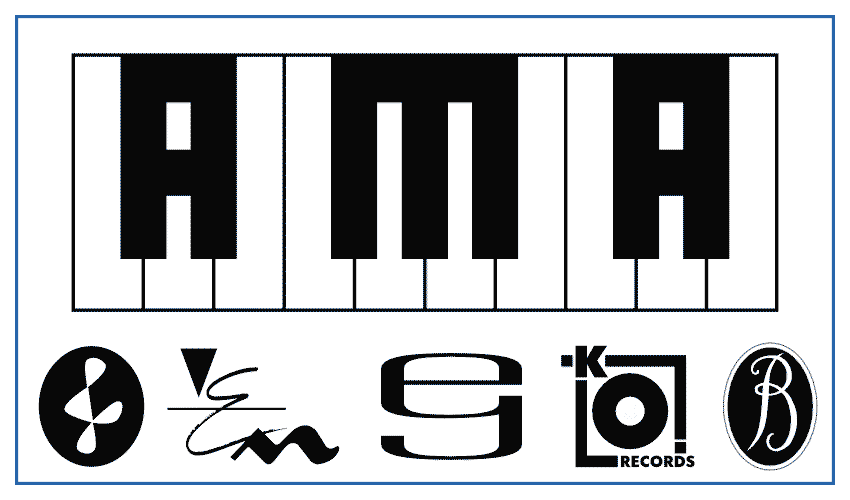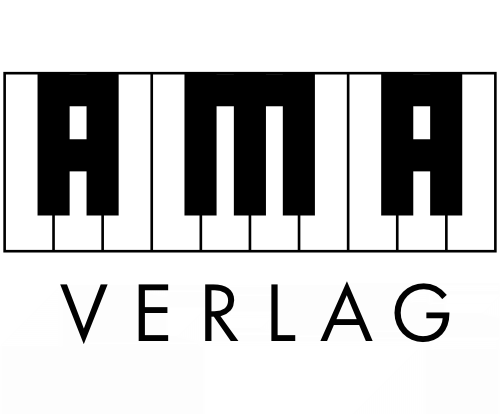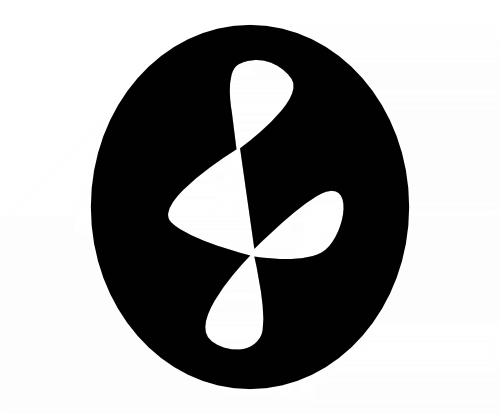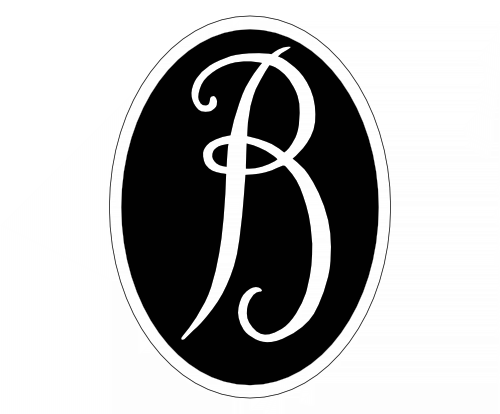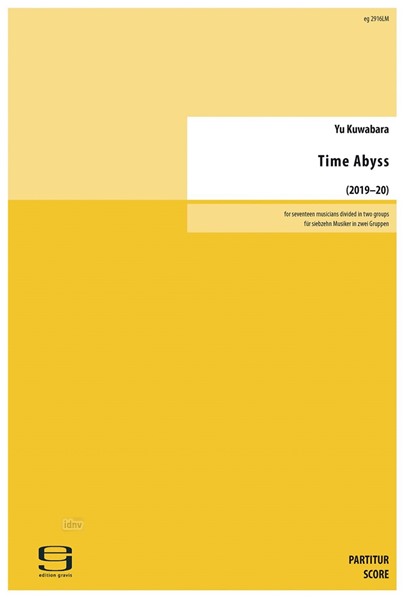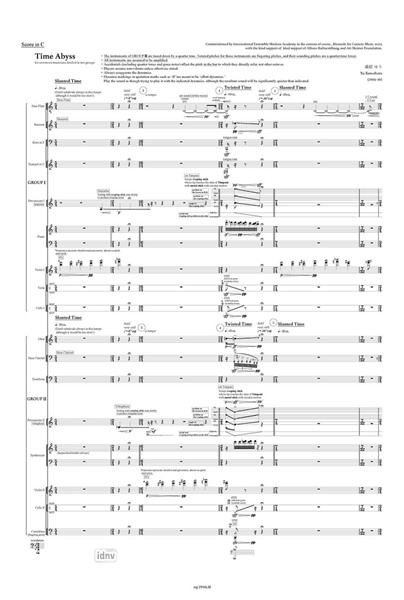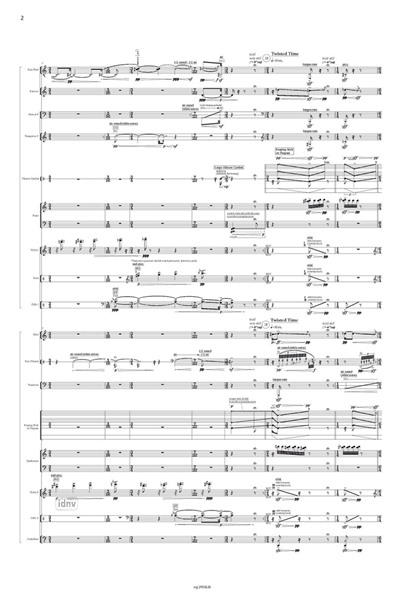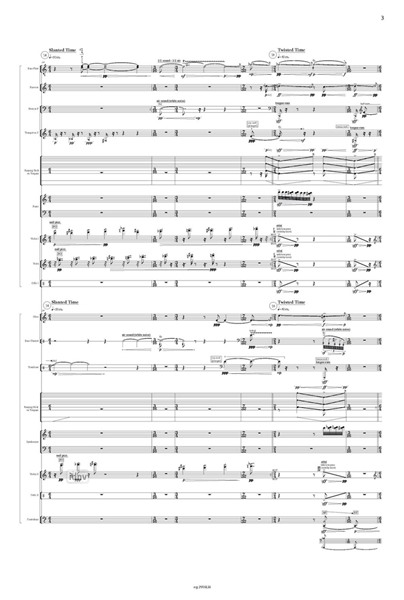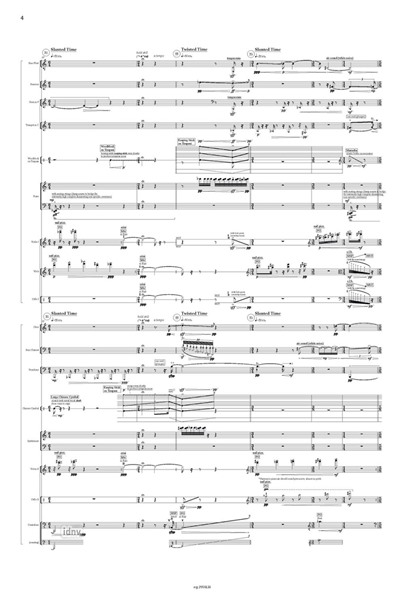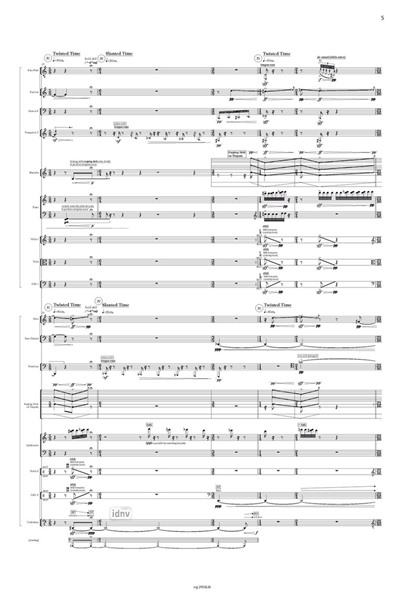Description
I have always been trying to find an answer that intermediates some things or some contexts, sometimes in between the past and the present, in between Japan and the rest of the world, or in between language, sound, and music. One of the recent big questions is what ‘time’ means to me. This exploration has been informed by my research and collaborations with traditional Japanese arts and music, which have profoundly influenced my understanding of time and space in music. What is space?
How can I investigate how to create a ‘form’ of time?
In this composition, “Time Abyss” the central theme revolves around the intricate treatment of ‘tempo.’ I have devised three unique time fields: “Nested Time”, “Slanted Time”, and “Twisted Time”. Each of these fields, with its distinct tempo triggers, is designed to unsettle the conductor and performers, challenging their conventional sense of time. In other words, this composition is all about doubting the human functions that control what they do.
“Nested Time” is made by piling many ritardando repeats that decelerate to twice as slow. In “Slanted Time”, the tempo is intentionally set slow, creating an enormous space within each beat. This space causes fluctuations and gaps in each performer’s sense of tempo, making it challenging to synchronize. As a result, performers are forced to count carefully and focus on maintaining pressure before producing sounds. This means they should pay more attention to each sound than they would typically. Consequently, the energy of each sound accumulates, resulting in a more stable and durable quality when released. In “Twisted Time”, beats constantly change on each bar. Those three kinds of time fields keep going on individually in a circle. I tried finding a ‘form’ with modulating between them. This composition is like listening to three
kinds of music while changing these channels.
Another intriguing aspect of this arrangement is the division of the ensemble into two groups. Group I occupies the left side of the stage, while Group II is placed on the right side, with the instruments a quarter tone lower. This spatial and tonal division creates a subtle acoustic experience, immersing the audience in the interaction between the two groups.
